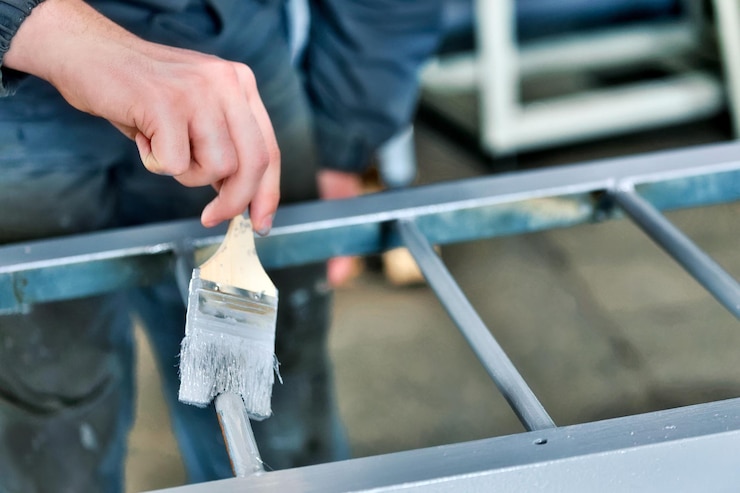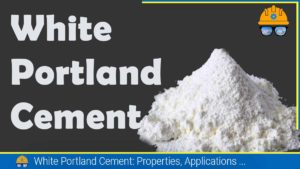Aluminum paint offers numerous advantages across a wide range of applications. It provides practical benefits by enhancing protection against corrosion and weathering, while also adding an attractive metallic finish. In this article, we will delve into the various benefits of aluminum paint, explore how to choose the right type for your needs, discuss the application process, and address common questions in our FAQs section. Whether you’re looking for long-lasting protection or a visually appealing coating, aluminum paint proves to be a versatile solution that combines functionality with aesthetics.
What is Aluminium Paint?
Aluminium paint, also known as aluminium metallic paint, is a type of coating that contains aluminium flakes or finely ground aluminium powder as its main pigment suspended in either quick-drying spirit varnish or slow-drying oil varnish as per actual requirement. It is designed to provide a thin metallic appearance and enhance the reflective properties of surfaces it is applied to.
The paint is typically made by combining aluminium flakes or powder with a binder, solvents, and additives. The aluminium flakes or powder give the paint its metallic appearance, as they reflect light and create a shiny, reflective surface. The binder holds the aluminium particles together and helps the paint adhere to the surface. It is used for painting woodwork and metal surfaces (Punmia, p615). Aluminium paint is also gaining popularity because of
its shining and contrast properties and heat and chemical resistance (Duggal, p429). Aluminum paints are available in several different finishes, including silvery, shiny, metallic, and bright metallic.

The Benefits of Aluminum Paint:
Enhanced Protection: Aluminum paint acts as a reliable barrier, safeguarding surfaces from corrosive elements and weather conditions. It forms a protective layer that helps prevent rust and deterioration, extending the lifespan of the coated material. Moreover, aluminium paint has other protective properties that make it an ideal choice for different surfaces.
Heat Reflectivity: One of the notable benefits of aluminium paint is its excellent heat reflectivity. When applied, it reflects a significant amount of solar radiation, reducing heat absorption. This property is particularly advantageous for surfaces exposed to intense sunlight, such as roofs or metal structures. In addition to protection, aluminium paint also offers aesthetic enhancements.
Metallic Appearance: Aluminum paint provides a visually appealing metallic finish, adding a touch of sophistication and shine to surfaces. It creates a reflective effect that can transform the overall appearance of various objects or structures.
High Electrical Resistant: Aluminum paint exhibits electrical resistance, which means it has the ability to impede or limit the flow of electrical current when applied to a surface. This property can be advantageous in various applications where electrical conductivity needs to be minimized or controlled. By providing electrical resistance, aluminum paint helps prevent the occurrence of electrical short circuits or unwanted electrical pathways, enhancing safety and performance in electrical systems.
Visibility in Darkness: Aluminum paint possesses a lustering property, which means it has the ability to create a glossy and reflective appearance when applied to a surface. Due to which its advantages over other types of paint is visible in darkness.
Applications of Aluminum paint:
When it comes to applying paint, whether it’s aluminium paint or any other type, there are specific steps that should be followed to achieve optimal results and minimize paint wastage. The application process for aluminium paint is similar in this regard. Therefore, the following steps should be implemented to ensure a successful application:
Collection of Materials:
Determine the most suitable method for applying the aluminium paint based on the surface area, the desired finish, and the available equipment. Common application methods include a brush, roller, or spray. Choose the method that allows for efficient coverage and meets the requirements of the project.
Preparing Surface:
This is the most essential part of the paintwork. Before applying aluminium paint, it’s crucial to prepare the surface properly. This involves cleaning the surface to remove dirt, dust, grease, or any other contaminants. Additionally, any existing paint or coating should be thoroughly scraped or sanded to create a smooth and clean surface.
Priming (if necessary):
Depending on the condition of the surface and the type of aluminium paint being used, priming may be required. Apply a suitable primer that is compatible with both the surface material and the aluminium paint. Priming helps improve adhesion and promotes a more even application of the paint.
Mixing the Paint/Stir the Paint:
The mixing of the paint has to be done by following specific instructions provided by the manufacturer of the aluminium paint you are using. It is important to use a clean container or paint tray for mixing the paint. Stirring will ensure that any settled pigments or additives are properly mixed and dispersed within the paint. Stir the paint thoroughly to ensure consistent colour and texture.
After thoroughly mixing the paint, assess its consistency to ensure it falls within the desired range. If the paint appears excessively thin, you can adjust it by adding a small amount of water. On the other hand, if the paint seems too thick, consider incorporating additional aluminium powder to achieve the desired thickness.
Application of Paint
When it’s time to apply the paint, it is important to utilize the appropriate tools. Opt for a natural-bristle brush to coat the surface effectively, and employ a roller to ensure the even distribution of the paint. Additionally, consider employing a small paintbrush to access corners and hard-to-reach areas with precision.
While applying the paint, really depends upon the surface to be painted. If the painting is to be done for old work, just a single coat is needed. However, the painting is for the new work, it is necessarily painted with two coats namely the first and finish coat.
- First Coat: With the help of a brush or roller, apply the Aluminium paint in even and consistent strokes, making sure to cover the entire surface and taking care to avoid excessive or thin application. Allow sufficient time for the first coat of paint to set and dry thoroughly. This ensures that the paint adheres properly to the surface and achieves its intended properties. Avoid exposing the freshly painted surface to excessive moisture, heat, or other adverse conditions during this drying period.
- Second/Finish Coat: Second coat of paint is only necessary for the new paintwork. For old paintwork, the second paint coat is not mandatorily required. Therefore, start the second/finished coat of paintwork when the first coat has dried thoroughly. Similarly, let the second or finished coat dry before any activity with the painted surface.
Clean-up and Maintenance:
Clean up any tools or equipment used for the application, following the manufacturer’s instructions. Properly dispose of any paint waste or leftover materials according to local regulations. To maintain the painted surface’s appearance and longevity, follow any maintenance guidelines provided by the paint manufacturer.
Follow the manufacturer’s instructions to clean up any tools or equipment used for the application. Adhere to local regulations for proper disposal of any paint waste or leftover materials. To maintain the appearance and longevity of the painted surface, follow any maintenance guidelines provided by the paint manufacturer.
FAQs:
Q: Is aluminum paint suitable for outdoor use?
A: Yes, aluminum paint is well-suited for outdoor use. It provides excellent protection against corrosion and weathering, making it ideal for surfaces exposed to the elements.
Q: Can aluminum paint be applied to different surfaces?
A: Yes, aluminum paint can be applied to a variety of surfaces, including metal, wood, concrete, and even certain plastics. However, it is important to ensure proper surface preparation and choose the right type of aluminum paint for the specific surface.
Q: Is it necessary to prime the surface before applying aluminum paint?
A: It depends on the surface and the specific aluminum paint being used. Some aluminum paints may require a primer, especially on bare metal surfaces, to improve adhesion and enhance the paint’s performance. Refer to the product instructions or consult a professional for guidance.
Q: How long does aluminum paint take to dry?
A: Drying times can vary depending on factors such as temperature, humidity, and the thickness of the paint layer. Typically, aluminum paint can take anywhere from a few hours to a day or more to fully dry. It is important to refer the product instructions for specific drying time recommendations.
References:
- Punmia, B.C (2006). A textbook of Building Construction. Laxmi Publications (P) Ltd. New Delhi-110002
- Bhavikatti, S.S. (2010). Basic Civil Engineering. New Age International (P) Limited.Publishers. New Delhi-110002
- Duggal, S.K (2008). Building Materials. New Age International (P) Limited.Publishers. New Delhi-110002
Also, read:
- Types of Paints Used in Building Construction
- Bhutanese Painting for Building Construction in Bhutan. | Types | Significant | Specification
- What are Wood-Plastic Composites (WPCs)? What are Wood-Plastic Composites (WPCs)?
![]()







